Protecting Salmon and Orcas from Toxics
NWEA filed a lawsuit in federal court this week accusing the Environmental Protection Agency (EPA) of failing to bring Washington State’s water quality standards out of the last century all the while pretending to care about salmon and orcas. NWEA’s lawsuit challenges EPA’s 2017 denial of a formal petition NWEA submitted in October 2013. The NWEA petition asked EPA to update Washington’s nearly three decades-old water quality standards to protect aquatic life—such as Chinook salmon—from toxics.
While controversy and litigation continue to swirl around Washington’s toxics standards for human health protection—known as the “fish consumption rule”—only NWEA’s petition has focused on the state’s standards for protecting fish and other aquatic life.
EPA’s failure to ensure that Washington’s water quality standards reflect the science of this century cripples the ability of the Clean Water Act to reduce unsafe levels of toxic discharges. While EPA plasters its website with the deteriorating status of orca whales and Chinook salmon from toxic contamination and the Governor’s Southern Resident Orca Task Force bemoans toxics in Puget Sound, when it comes to following the most fundamental provision of the Clean Water Act to protect these species, they do nothing.
One toxic pollutant—copper—illustrates the problem. Copper has many negative impacts on salmon including inhibiting their ability to smell their way to their natal streams and to avoid predators. Allowable levels for human health protection from copper are far higher than levels that harm salmon.
The lawsuit identifies over two dozen toxics that have not been updated, including: aluminum, ammonia, arsenic, copper, cyanide, mercury, nickel, PCBs, selenium, pentachlorophenol, and tributylin.
As a result of lawsuits filed by NWEA regarding toxic standards in Oregon and Idaho, the federal fish and wildlife agencies have concluded that many of the pollutants with outdated standards in Washington pose “jeopardy” to the survival of salmon, steelhead, and bull trout, including: aluminum, ammonia, arsenic, cadmium, copper, lead, nickel, selenium, zinc, cyanide, and mercury. Many of these pollutants are found in stormwater discharges that have been implicated in the demise of salmon in Puget Sound.
NWEA is represented in this case by Lia Comerford of the Earthrise Law Center at Lewis & Clark Law School (Portland) and Bryan Telegin of Bricklin & Newman (Seattle).
- Court Wins for Puget Sound & Columbia River
- Stopping Tacoma from Harming Puget Sound Chinook Salmon
- Victory for Puget Sound
- EPA Must Act on Toxics, Court Orders
- Puget Sound Endangered by Agency Inaction
- Comments on Deschutes River TMDL
- Protecting Salmon and Orcas from Toxics
- Deschutes River Capitol Lake Complaint Filed
- Sewage Treatment Appeal Lands in Governor’s Lap
- Stalled Plans for Deschutes River Clean-up Brings New Court Action
